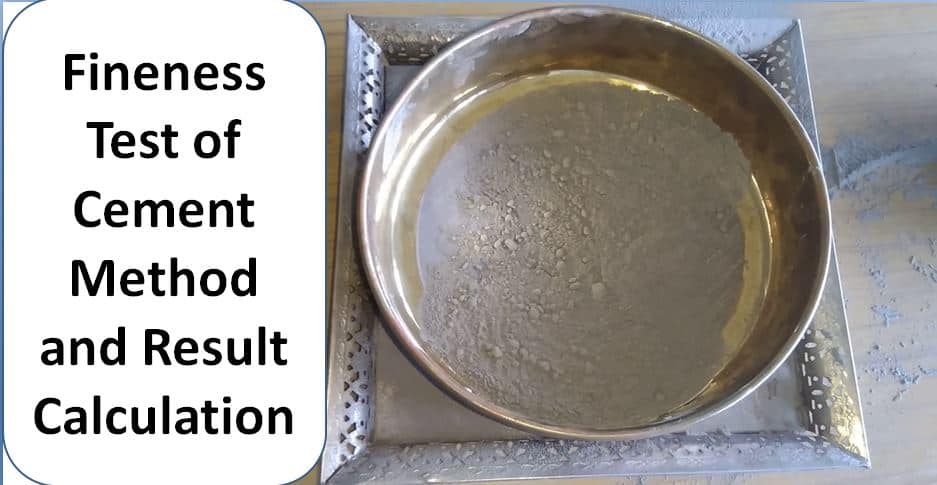The fineness modulus of cement is an empirical value determined by adding up the percentage of aggregate retained on each sieve in a particular sequence and then dividing the total by 100.
It is possible to calculate the percentage of cement whose grain sizes are greater than the required mesh size.
What is Fineness Modulus of Cement?
The fineness of cement is a measurement of cement particle size, it is expressed in terms of cement’s specific surface area.
Cement samples are sieved via an IS standard sieve in order to perform the fineness test on cement.
When a cement particle is larger than 90 microns, its weight is calculated.
The fraction of cement particles retained is then determined.
This is referred to as cement’s fineness.

Purpose of Fineness Modulus of Cement:
- The rate of hydration and strong growth are influenced by cement fineness.
- Reducing coarseness can reduce bleeding.
- A fineness test calculates the cement’s surface area per mass is used to adjust the ground surface.
- The rate of strong growth and corresponding heat of hydration are both quick with finer cement when it comes into contact with water.
Fineness Modulus Test of Cement:
Modulus of Cement by Dry Sieving:
Apparatus:
- 90µm Sieve.
- Balance capable of weighing 10g to the nearest 10mg.
- Glass rod.
- Stoppered jar.
- Pan and Lid.
Procedure for Determining Fineness Modulus of Cement:
- To break up any clumps, shake the test cement sample for 2 minutes in a sealed container.
- The resulting powder should be gently stirred to spread the particles throughout the cement using a clean, dry rod.
- To catch the cement that passes through the sieve places a pan underneath it.
- Place 10 g of cement on the sieve after precisely weighing it to the nearest 0.01 g.
- Place the sieve’s lid on top.
- Shake the sieve in a planetary, linear, and swirling motion until no more fine material can pass through.
- Remove the residue, then weigh it.
- Calculate its mass as a proportion (R1) of the initial amount you put in the sieve.
- To obtain R2, repeat steps with a new sample.
- Perform the third sieve if the results differ by more than 1% absolute, then compute the average of the three findings.
Calculation:
Ravg = (R1+R2+R3) / 3
Fineness modulus of cement = Ravg/ 100
Fineness = (W2/W1) * 100
According to IS Recommendations, the standard value of the fineness of cement should be less than 10%
Advantages of Fineness Modulus of Cement:
- The rate of hydration, strength gain and heat evolution are both significantly influenced by the fineness of the cement.
- Greater surface area for hydration is provided by finer cement, hastening the development of strength.
- By enhancing fineness, bleeding can be minimized.
- By enhancing fineness, shrinkage can be minimized.
- To ensure that cement has been ground properly, a fineness test is used.
Disadvantages of Fineness Modulus of Cement:
- More surface area created by finer cement’s alkalis causes a stronger reaction with alkali-reactive aggregate, which in turn causes cracks and concrete disintegration.
- Finer cement shows more shrinkage and cracking susceptibility.
- Fineness of cement affects hydration rate.
Also read: Fineness Modulus of Fine Aggregate | Modulus of Rupture
Conclusion:
The surface area of the cement particles per unit mass is measured by a Fineness Modulus of Cement test used to alter the way cement is properly ground.











Very nice